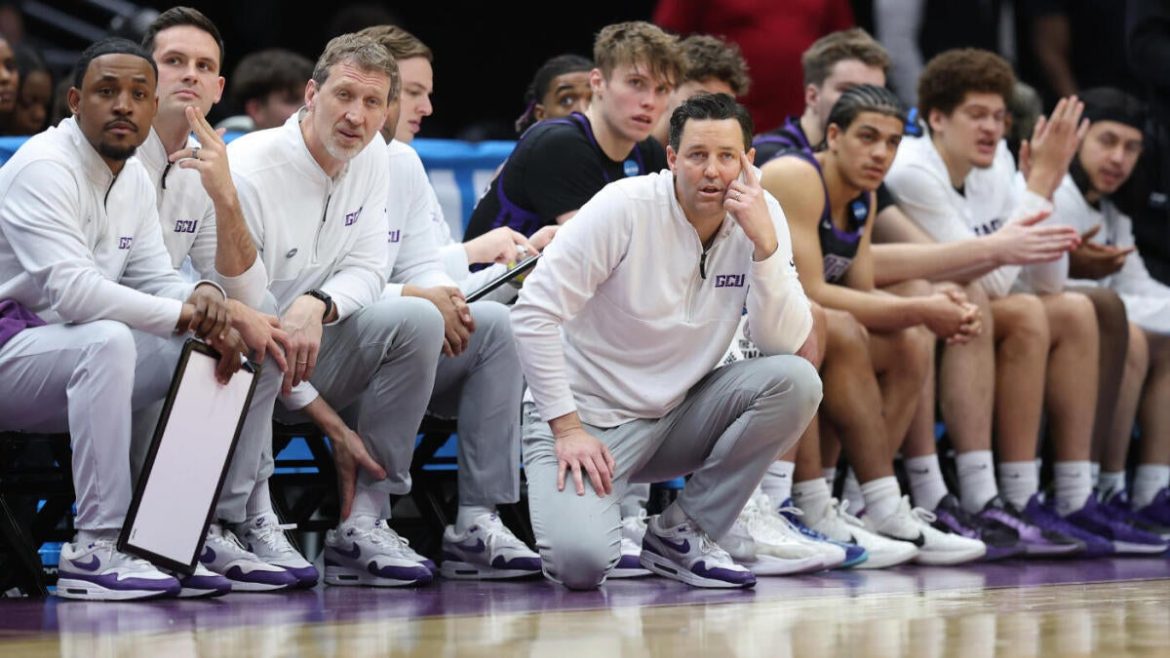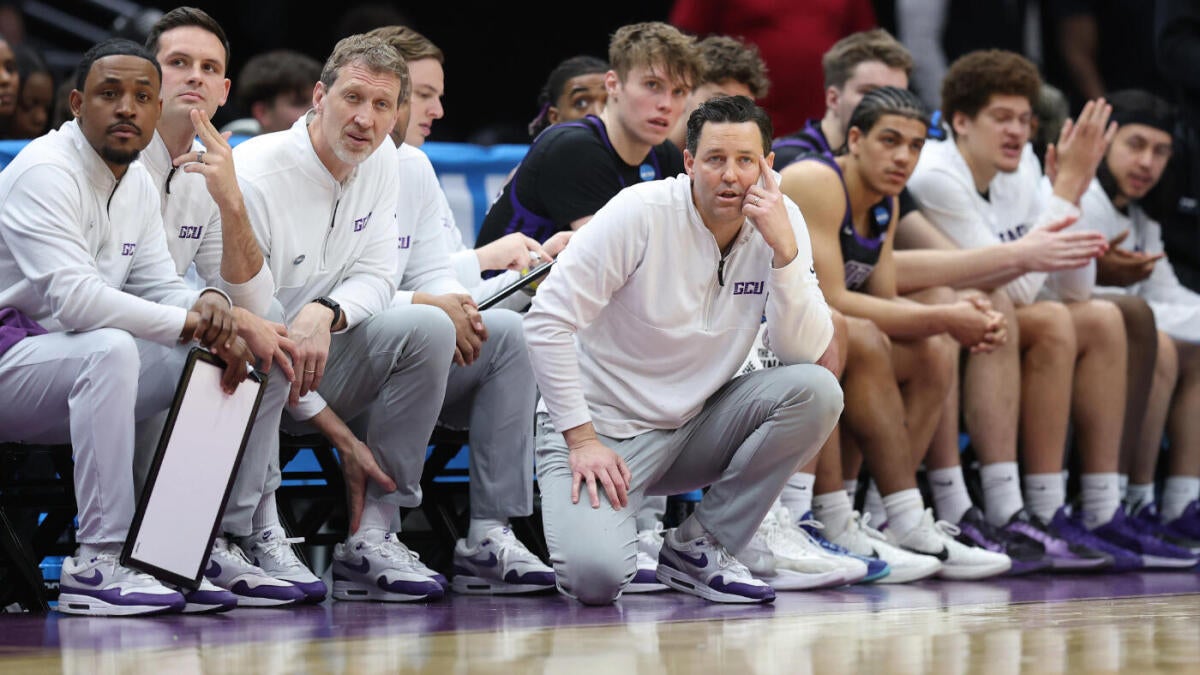The Rise of the Antelopes: Grand Canyon University’s Leap to the Mountain West Conference
A Canyon-Sized Ambition
In the dynamic world of college athletics, few institutions have experienced as rapid and transformative a journey as Grand Canyon University (GCU). Founded in 1949 as a small Baptist college, GCU has evolved into a major player in higher education and athletics. Its recent acceptance into the Mountain West Conference (MWC) marks a significant milestone in this evolution. The university’s transition from the Western Athletic Conference (WAC) to the MWC, initially planned for 2026 but now accelerated, underscores its ambition to compete at the highest levels of collegiate sports.
GCU’s rise is a testament to strategic vision and relentless pursuit of excellence. The university’s decision to join the MWC, despite initially accepting an invitation to the West Coast Conference (WCC), highlights its commitment to securing a platform that aligns with its aspirations. This move is not just about conference affiliation; it’s about positioning GCU as a national contender in college athletics.
From the WAC to the WCC…and Then the MWC
GCU’s path to the MWC has been marked by calculated decisions and a clear-eyed assessment of its competitive future. The WAC provided a solid foundation, but the MWC’s higher profile and more intense competition offered an irresistible opportunity. The initial plan to join the WCC in 2025 was a strategic pivot, reflecting GCU’s desire to align with a conference known for its strong basketball programs and academic prestige. However, the MWC’s offer presented a more compelling vision for GCU’s athletic future.
The MWC’s diverse membership, including institutions like Air Force, New Mexico, Nevada, San Jose State, UNLV, and Wyoming, offers GCU a chance to compete against some of the nation’s top teams. This transition is not just about basketball; it’s about expanding GCU’s athletic footprint across multiple sports. The MWC’s strong national presence and passionate fan bases will provide GCU with the exposure and competitive environment it needs to grow.
The Mountain West: A Landscape of Opportunity
The MWC is more than just a conference; it’s a gateway to national prominence. For GCU, joining the MWC means stepping into a league with a rich history and a commitment to excellence. The conference’s strong basketball tradition, in particular, aligns with GCU’s strengths. The Antelopes’ men’s basketball team has reached three of the last four NCAA tournaments, a feat that underscores the program’s potential.
Beyond basketball, GCU’s women’s teams will also benefit from the MWC’s broader competitive platforms. The conference’s 17 sponsored sports offer opportunities for growth and development across the board. This diversification is crucial for GCU’s long-term success, as it allows the university to build a comprehensive athletic program that competes at the highest levels in multiple sports.
A Non-Football Powerhouse?
GCU’s status as a non-football-playing member of the MWC is a unique and intriguing aspect of its transition. While the MWC is renowned for its football programs, GCU’s inclusion signals a willingness to embrace institutions that excel in other sports. This move reflects a broader trend in college athletics, where conferences are increasingly valuing diversity in their membership.
For GCU, this presents an opportunity to showcase its strengths in basketball and other sports without the pressure of fielding a football team. The MWC’s commitment to supporting non-football members is a testament to its forward-thinking approach to conference realignment. This alignment benefits both GCU and the MWC, as it allows the conference to expand its reach and the university to compete on a larger stage.
Financial Implications and the Price of Progress
Conference realignment is often driven by financial considerations, and GCU’s move to the MWC is no exception. The university’s reported $3.5 million entry fee reflects the value the MWC places on its membership. In return, GCU is expected to receive a guaranteed $1.5 million in media-rights distributions over the next six years. This financial investment is a strategic move that will provide GCU with the resources needed to support its athletic programs and compete at a higher level.
The financial aspect of this transition is not just about the entry fee; it’s about the long-term benefits that come with MWC membership. Increased media exposure, revenue-sharing opportunities, and access to a larger fan base are all valuable assets that will help GCU grow its athletic programs. This financial commitment is a testament to GCU’s belief in its ability to succeed in the MWC and its willingness to invest in its future.
The Ripple Effect: Conference Realignment and the Shifting Landscape
GCU’s move to the MWC is part of a larger trend of conference realignment that is reshaping college athletics. As institutions seek to improve their competitive positioning and revenue streams, they are increasingly willing to switch conferences. This constant state of flux creates both challenges and opportunities for universities and conferences alike.
For the WAC, GCU’s departure is a significant loss. The conference has been hit hard by recent realignment moves, with several institutions leaving for other leagues. This trend highlights the competitive nature of conference realignment and the need for conferences to adapt to changing landscapes. For GCU, the move to the MWC represents an opportunity to position itself as a national contender and secure its place among the top athletic programs in the country.
A Win-Win Scenario?
The move to the MWC appears to be a mutually beneficial arrangement for both GCU and the conference. For GCU, it provides a higher profile, greater competitive opportunities, and increased revenue potential. The MWC, in turn, gains a growing and ambitious institution with a strong basketball program and a commitment to athletic excellence. This alignment strengthens the conference’s geographic footprint and expands its reach into the Phoenix metropolitan area, a valuable market for media and recruiting purposes.
The addition of GCU also diversifies the MWC’s membership, adding a non-football institution that excels in other sports. This diversification is crucial for the conference’s long-term success, as it allows the MWC to compete in multiple sports and attract a broader range of fans and sponsors. For GCU, the MWC’s strong national presence and competitive environment provide the perfect platform to showcase its athletic talents and grow its programs.
Challenges and Opportunities Ahead
While the future looks bright for GCU in the Mountain West, the university will undoubtedly face challenges as it transitions to its new conference. The competition will be tougher, the travel demands will be greater, and the pressure to succeed will be more intense. However, GCU has a proven track record of overcoming obstacles and achieving its goals. With its strong leadership, dedicated coaches, and talented athletes, the university is well-positioned to thrive in the MWC and make a significant impact on the conference.
The challenges ahead are not insurmountable; they are opportunities for growth and development. GCU’s ability to adapt to the MWC’s competitive environment will be crucial to its success. The university’s commitment to excellence and its willingness to invest in its athletic programs will help it navigate the challenges and seize the opportunities that lie ahead.
The Lopes are Rising
Grand Canyon University’s move to the Mountain West Conference marks a pivotal moment in the university’s history. It is a testament to the vision and ambition of GCU’s leadership, the hard work and dedication of its coaches and athletes, and the unwavering support of its fans. As the Antelopes prepare to embark on this new chapter, they do so with a sense of excitement and anticipation. The road ahead may be challenging, but the Lopes are rising, and they are ready to make their mark on the Mountain West Conference.
A Legacy in the Making
The story of Grand Canyon University is far from over. As the university continues to grow and evolve, its impact on the world of college athletics will only increase. The move to the Mountain West Conference is just the latest step in a remarkable journey, and it sets the stage for even greater achievements in the years to come. GCU is not just building an athletic program; it is building a legacy, one that will inspire generations of students and athletes for years to come. The future is bright for the Antelopes, and the college sports world eagerly anticipates their ascent in the Mountain West Conference.





